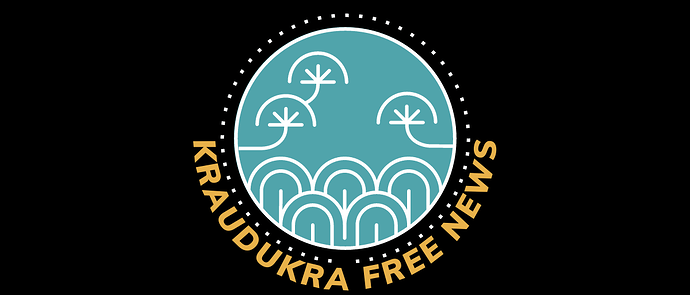Rebuilding the Ruined Coast: Southern Cordilia’s Long Road to Recovery
Panata, Krauanagaz— Nearly six months after the triple disaster that devastated Southern Cordilia, the region remains in a precarious state of flux. Grappling with intersecting burdens of physical reconstruction, economic collapse, political discontent, and emotional trauma. While recovery milestones have been achieved, the picture on the ground reveals a lengthy path forward, one confronted with inequality, mounting public frustrations, and difficult choices about the future.
The chain of disasters, an unprecedented magnitude 10.1 earthquake, a devastating tsunami, and the partial eruption of Mount Alkantarak, claimed over 220,000 lives and displaced close to two million. From coastal towns in Okhoa and Mitallduk to rural valleys in Krauanagaz, the landscape of Southern Cordilia was irrevocably changed. Satellite imagery from Emeraldian military engineers shows entire villages erased from maps, farmlands submerged under saltwater, and newly formed volcanic ridges reshaping once-accessible transit routes.
Today, much of the coastline remains classified as a Marine Disaster Zone. In Pantán and Sa’ossa, mangrove ecosystems and coral buffers are gone. Replaced by skeletal piers and hastily erected seawalls. “What was once paradise is now a scarred threshold,” said Dr. Halina Ver, a coastal ecologist with the Luzayyagaz Institute for Marine Research.
Despite over ₰3.8 billion pledged in international aid, rebuilding has proceeded unevenly across the region. In Krauanagaz, a centralized disaster response network and the engineering capacities of the Krauanagazan and allied governments allowed for quicker restoration of major transport corridors. According to the Federation Agency for Civil Engineering and Infrastructure, over 80% of national rail lines and ports in the southern provinces have resumed partial operations.
Yet the recovery is far from universal. In Talata and Sa’ossa, once-thriving resort hubs now host rows of empty guesthouses and food queues. Tourism revenue is down 74% from last year, and with insurance claims still tied up in litigation, local businesses are struggling to stay afloat. Kraudukra Resorts remains under federal investigation following a class-action lawsuit alleging negligence and environmental malpractice.
Mayor Geliá Kruz of Talata issued an open letter this week reading, “We do not need inspiration campaigns. We need access to funding, to land, to power grids. We need the means to rebuild ourselves.”
In contrast, Okhoa’s reconstruction has been markedly slower and more fragmented, complicated by political transition and tensions with former suzerain Zuhlgan. The newly autonomous Regional Council has clashed with NGOs over control of aid channels, and much of Okhoa’s historic capital remains in ruins. While solar microgrids installed with Zuhlgani assistance have powered 15 hillside villages, critics call the projects “performative diplomacy” meant to maintain soft influence over the fledgling state.
In Mitallduk, the crisis has taken on a more dangerous dimension. Though the MJRC (Mitallduk Joint Resistance Council) has coordinated some humanitarian response, armed groups affiliated with the HK insurgency have expanded their control in the southern highlands. A June report by the Cordilian Institute for Peace and Development found that insurgent checkpoints now obstruct over 35% of supply corridors into rural Mitallduk.
The World Forum’s Special Envoy for Reconstruction described the situation as “a slow-rolling humanitarian disaster, layered atop an unresolved civil conflict.” With aid convoys regularly looted and municipal leaders under threat, many NGOs have scaled back operations.
Despite reductions in cholera and Cordilian Fever outbreaks, thousands still reside in transitional camps, with persistent shortages in clean water and sanitation. A recent assessment by Doctors Without Borders (NLL) found alarming increases in PTSD, substance abuse, and suicide risk, particularly among youth and elderly populations.
Employment recovery remains bleak. The World Forum Labor Office reports that more than 400,000 jobs along the southwest Cordilian remain unfilled or permanently lost, especially in artisanal fisheries, coastal construction, and cultural tourism. In response, the Federation has launched the ₰220 million “Coastal Livelihoods Initiative,” supporting mangrove restoration, mobile artisan cooperatives, and ecotourism pilots.
“These projects matter,” said Lelani Aprún, co-founder of the Revive Reef Collective. “They don’t just give us work, they help us remember who we are.”
Corruption allegations have also plagued muktiple areas of the response. Mitalldukish auditors uncovered ₰47 million in diverted reconstruction funds. In Krauanagaz, oversight hearings into emergency housing contracts revealed potential favoritism and no-bid deals with federal allies. And in Okhoa, the Regional Council’s dispute with foreign aid partners has slowed housing construction on Kingsland Island.
Meanwhile, legislative tensions continue in Yayyára. Moderates in the Federation Assembly have joined Lupritali and Krautali leaders in demanding emergency autonomy provisions, allowing regional governments to bypass federal red tape to access international aid directly. President Thalira Renkara has yet to endorse the proposal, though her office said it was under consideration.
This week, the World Forum approved an additional ₰1.1 billion in long-term development loans for the region, conditioned on transparent oversight and joint local-federal planning boards. The Okhoa Reconstruction Authority announced plans to rebuild historic districts using climate-resilient materials and traditional architecture.
Still, the road to renewal is long. With another tropical storm season approaching, environmental NGOs warn of renewed flooding unless ecological buffers are restored. “You cannot rebuild without respecting nature,” said Dr. Anela Mir of Tidewatch International. “What we lost wasn’t just infrastructure. It was balance.”
For survivors like Miko Draven of Port Veyra, recovery is a quiet battle. “Some days it feels like we’re forgotten,” he said. “But then I see the kids in the weaving tents, or someone planting a new mangrove sapling. That’s hope. That’s us.”
